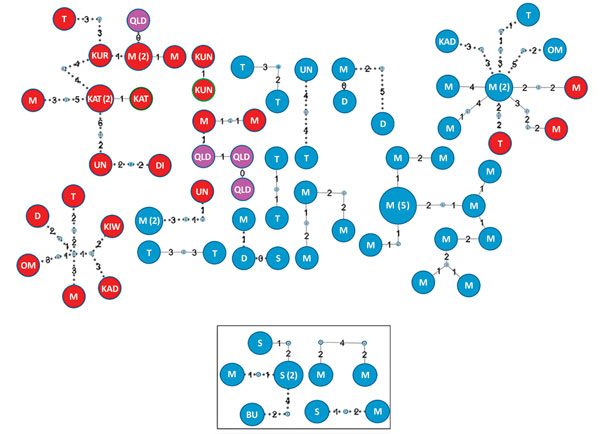Volume 25, Number 3—March 2019
Synopsis
Cross-Border Movement of Highly Drug-Resistant Mycobacterium tuberculosis from Papua New Guinea to Australia through Torres Strait Protected Zone, 2010–2015
Figure 3

Figure 3. Genomic clusters of highly drug-resistant tuberculosis cases among Papua New Guinea and Australia citizens residing or previously residing in the Torres Strait Protected Zone, 2010–2015, by lineage. The top shows the Beijing lineage, and the box at bottom shows the Euro-American lineage. Each circle represents >1 isolate. Larger circles represent >2 isolates with identical sequences; the number of specimens with identical sequences are indicated in parentheses. Details indicated with each circle are locality (initials; QLD residents shaded in pink), drug susceptibility (blue shading with blue outline), and drug resistance (multidrug resistance is red shading with blue outline, extreme drug resistance is red shading with green outline). Solid lines illustrate plausible transmission links among isolates from the same locality, and broken lines represent plausible transmission links among strains from different localities. Small nodes between lines represent unidentified ancestral isolates. Number on lines represents single-nucleotide polymorphism differences between isolates. BU, Buji; D, Daru; DI, Dimiri; KAD, Kadawa; KAT, Katatai; KIW, Kiwia; KUN, Kunini; KUR, Kurunti; M, Mabadauan; OM, Old Mawata; QLD, Queensland; S, Sigabadaru; T, Ture Ture; UN, unknown.